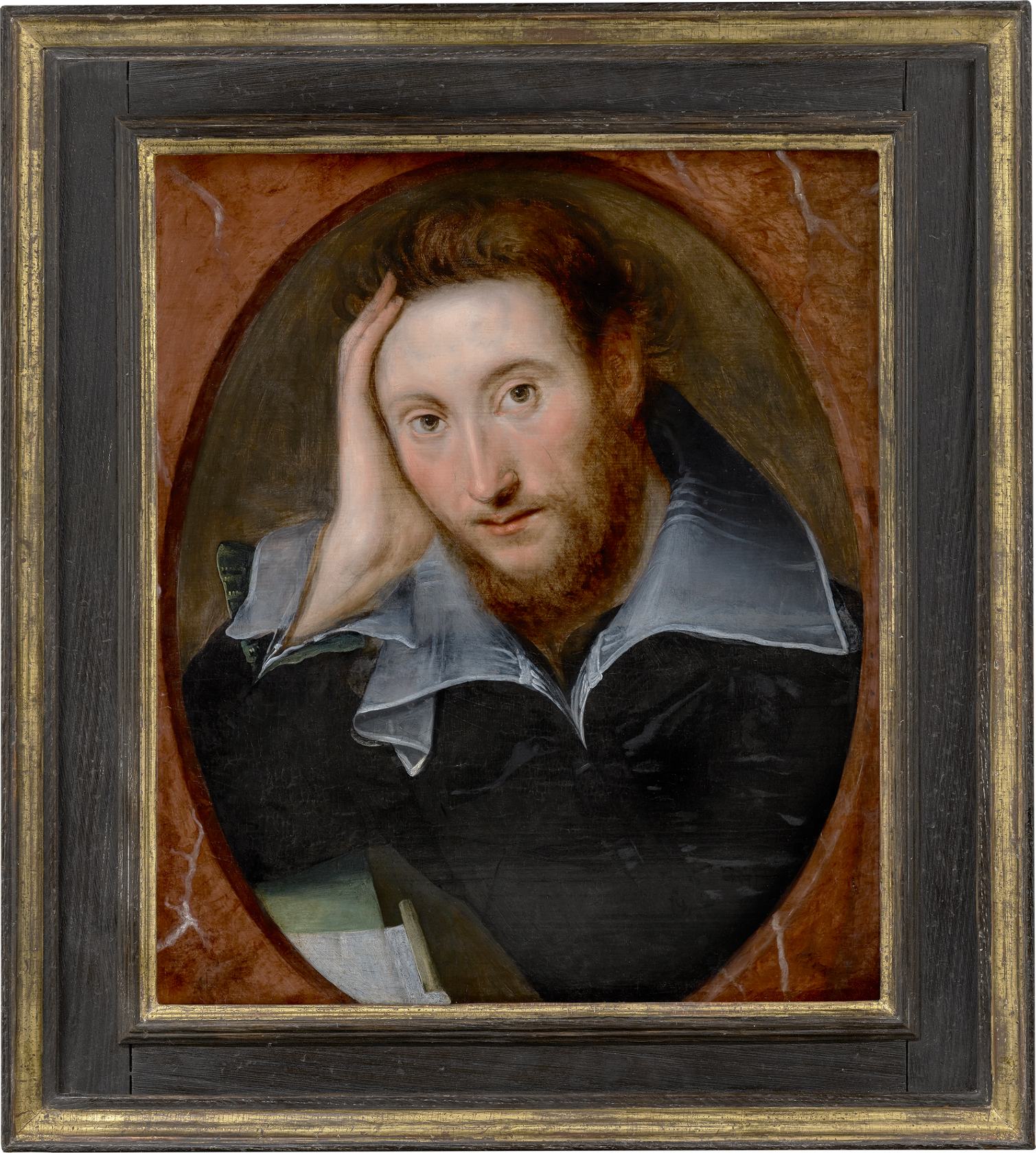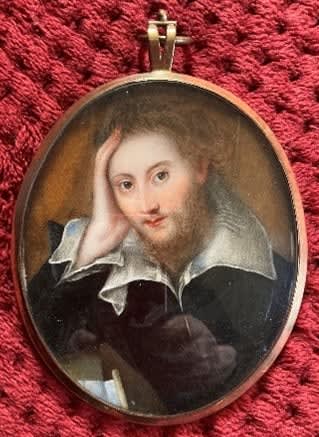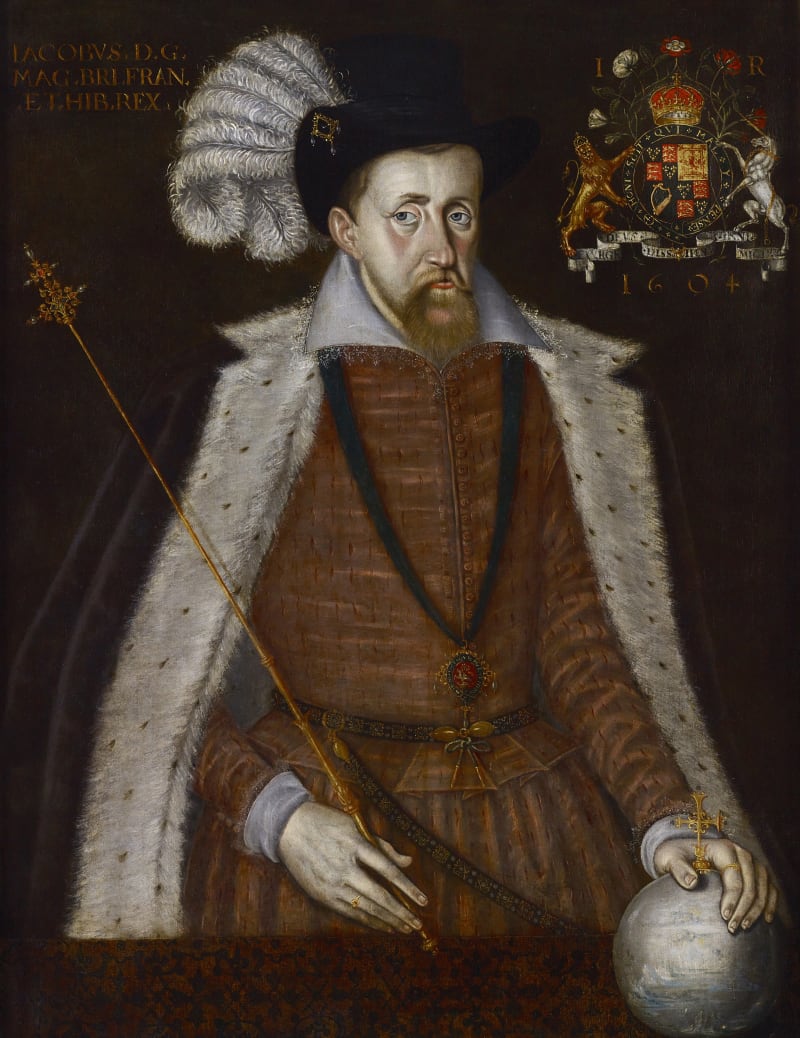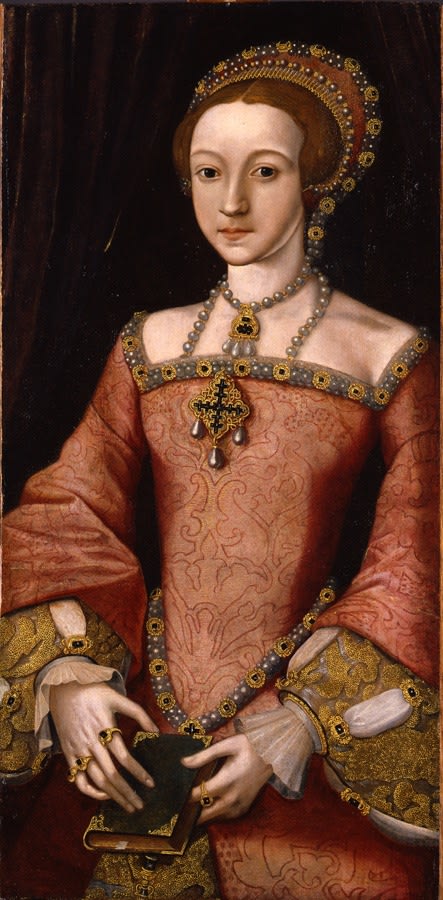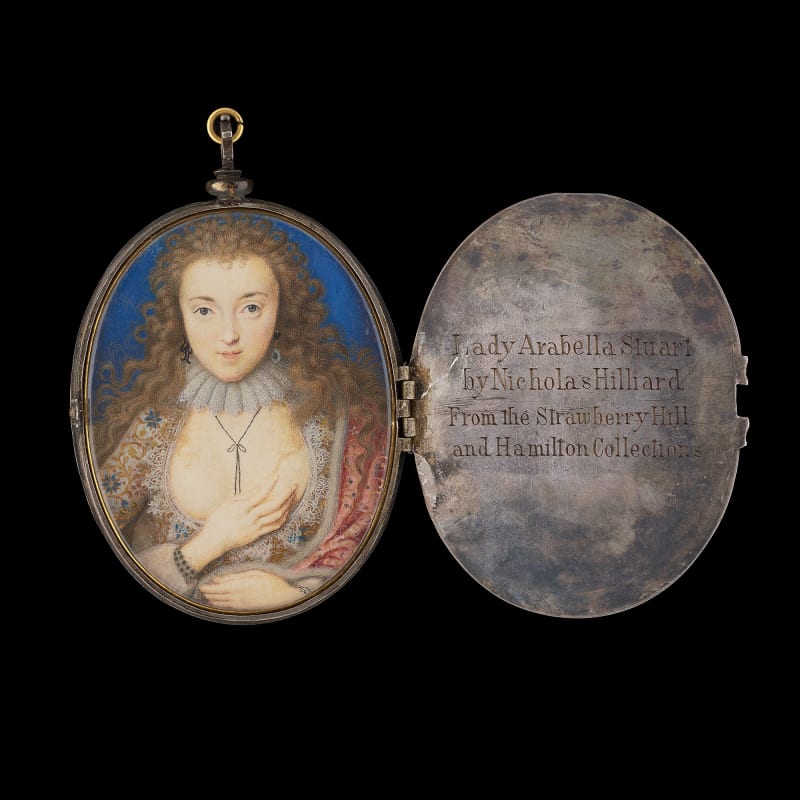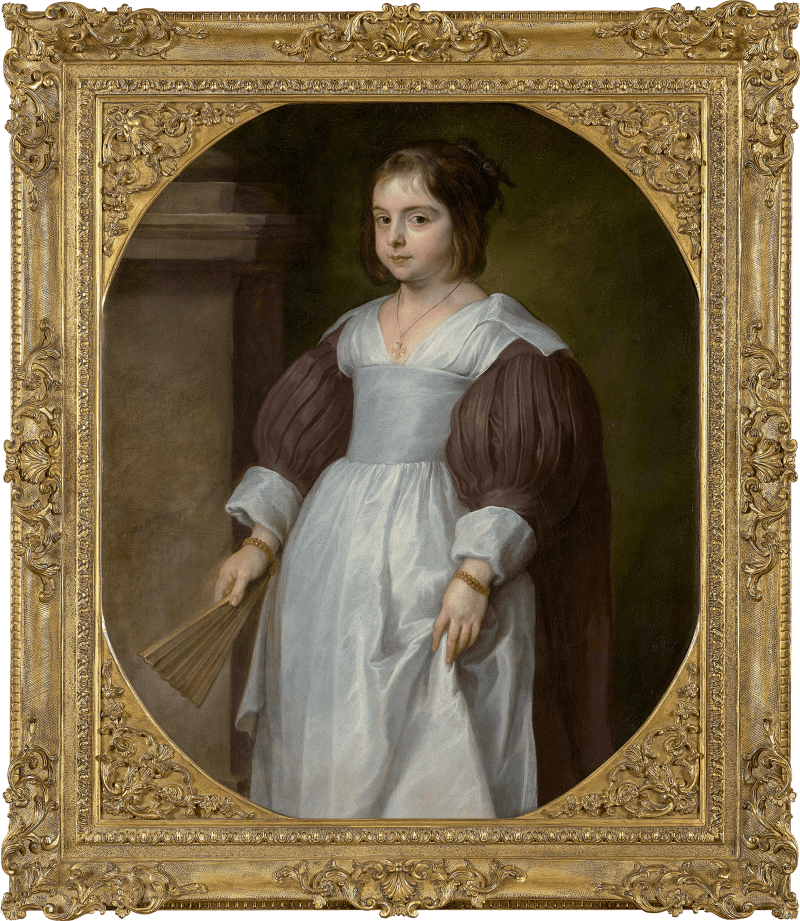During the 18th and 19th centuries, this portrait was considered a defining image of the world’s greatest playwright, William Shakespeare. The image was circulated while it was in the possession of the artist Richard Cosway R.A. – in 1808 it was copied in miniature [fig. 1] by Charlotte Jones and in 1827 it was engraved by William Holl Sr and published by Abraham Wivell [fig. 2].
The study of portraits of literary figures from this date is challenging, not least because the sitters in so few works can be firmly identified.[1] One of the most notable surviving literary portraits is that of the poet John Donne (1572-1632) in the National Portrait Gallery, which shows the young writer dressed informally with his collar open and his arms crossed. This theatrical and daringly casual approach to portraiture was highly unusual but has since become recognised as a subgenre of image-making favoured by those who lived and worked in creative circles. These...
During the 18th and 19th centuries, this portrait was considered a defining image of the world’s greatest playwright, William Shakespeare. The image was circulated while it was in the possession of the artist Richard Cosway R.A. – in 1808 it was copied in miniature [fig. 1] by Charlotte Jones and in 1827 it was engraved by William Holl Sr and published by Abraham Wivell [fig. 2].
The study of portraits of literary figures from this date is challenging, not least because the sitters in so few works can be firmly identified.[1] One of the most notable surviving literary portraits is that of the poet John Donne (1572-1632) in the National Portrait Gallery, which shows the young writer dressed informally with his collar open and his arms crossed. This theatrical and daringly casual approach to portraiture was highly unusual but has since become recognised as a subgenre of image-making favoured by those who lived and worked in creative circles. These portraits, of which only a small number survive, can be broadly characterised by their relatively small scale, expressive poses, and informal style of dress.
The present work is one such example and may possibly depict a poet. Glancing out at the viewer with his head on his hand, we feel, in the words of one scholar who commented on this portrait: ‘as if we are intruding on a private moment of personal reflection, perhaps of a man who is reflecting upon his love-torn heart.’[2] This visual expression of sorrow ties into the Elizabethan concept of melancholy - a depressed state of mind supposedly caused by intense study and a love of learning.[3] By presenting himself in this manner, the sitter is revealing his artistic aspirations, but also his deep intellectual mindset. Like Donne, the sitter is dressed informally with his wide falling collar open at the neck with no jewellery or other accessories. Although by Elizabethan standards this state of undress would certainly have raised eyebrows, this portrait was most likely only intended for private display and thus its purpose was quite different to the average commissioned portrait intended to flaunt a refined sitter’s wealth and success. It was perhaps instead painted as a gift for a friend, lover, or patron. Interestingly, an image of a further portrait showing the same sitter, but painted half-length to their waist, has recently come to light (fig.3). It has, in the past, been misidentified as a likeness of the Welsh pirate Piers Griffith (c.1568-1628), although the reason for this remains unclear.[4] The latter portrait, which was perhaps painted by the same artist as the present work, shows the sitter in an equally romantic manner, resting nonchalantly on a ledge with his left hand on the hilt of a sword and his collar wide open. Based on the existence of these two portraits, the sitter was evidently a man of some note, and further research into the recently emerged work – the whereabouts of which is at present unknown – might provide some answers.[5]
Although the names of numerous portrait painters (or ‘picturemakers’) from this period are recorded (predominantly those who were members of The Worshipful Company of Painter-Stainers in the City of London), due to the fact that so few of them signed their work, connecting portraits with painters is a very difficult task. The identity of the artist who painted this work is likewise at present unknown, although its evident quality and the freedom of the preparatory undrawing - now visible due to the upper paint layer becoming more transparent over time - suggests it was painted by a talented hand.
[1] For a more comprehensive overview of literary portraits from this period see ‘Performance and Presence: Portraits of Playwrights, Actors and Artists’ Tarnya Cooper, (2012) Citizen Portrait: Portrait Painting and the Urban Elite of Tudor and Jacobean England and Wales. New Haven and London: Paul Mellon Center
[2] Ibid., p. 191.
[3] Ibid., T. 2012, p. 191.
[4] It was illustrated on the front cover of Piers Griffith: Pirate of Penrhyn by Glenys Mair Lloyd (Humprey Signs Ltd, 2015)
[5] The portrait was sold by Raphael Valls Limited, London, in the early 2000s. We are grateful to Raphael Valls for his assistance when researching this work.
